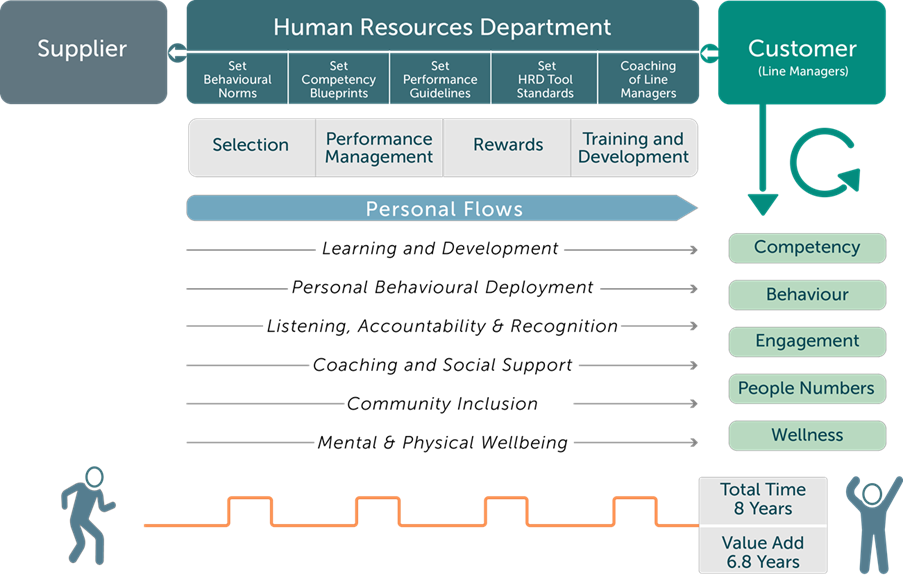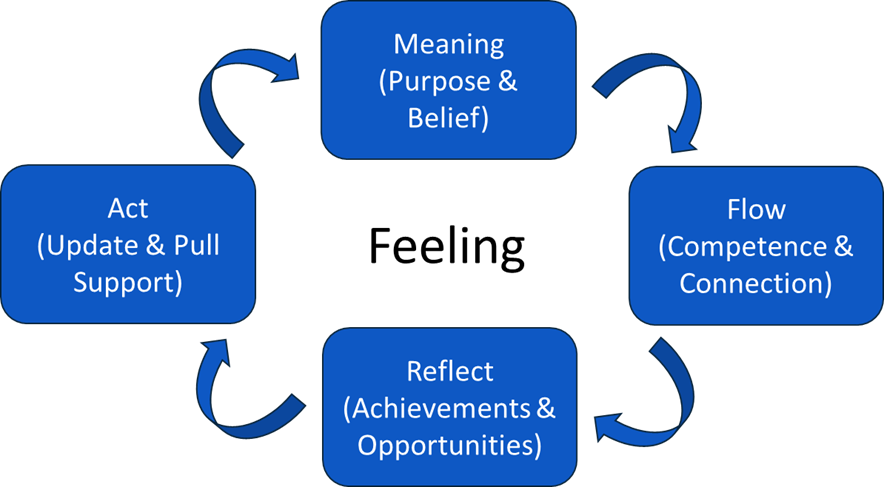by Peter Hines, Shingo Faculty Fellow, Shingo Examiner, Shingo Academy Member, and Shingo Publication Award recipient
The Shingo Model has had a profound effect on many organizations. I have visited many successful sites around the world that have well-implemented Lean programs. But what differentiates the few really fantastic organizations is the feeling around me when I’m there. I sense it in people’s smiles, their tone of voice and body language, and their apparent joy of being at work. The culture is at the heart of what they do; they are led with humility and every person is respected. But I’ve only felt the culture in a few organizations. When I visit most of them, I hear the words, but I don’t feel the culture.
For the few organizations that have reached this level, I find that they either implicitly or explicitly spend as much or more time managing the “people value stream” as they do the well-known “product value stream.” They have also grasped the power of positive psychology and realized that so much of the traditional Lean language can be psychologically damaging. For instance, a primary focus on top-down targets and KPIs, standard work, waste removal, and push-based training is likely to lead to poor levels of motivation and ultimately disappointing sustainability.
So what is really involved when organizations begin to manage the “people value stream?” We best illustrate this with a Future State Map (see image below) where we apply the same principles to the people value stream that we apply to the product value stream.
First, we need to create Enterprise Alignment, which involves thinking about our team members as customers and helping them develop their own meaning and purpose so they can think systematically about the experience they are looking for. It also involves creating Continuous Improvement for them as we discover their life cycle learning process, their individual flows, and their pull for support. This, consequently, is what will help them become the best person they can be.
Team members need to think scientifically but also, in an extension of the work of the Shingo Institute, they need to feel scientifically. This happens when the feeling part of the brain (the limbic) kicks in well before the thinking part (the cortex) does. This involves the use of a similar approach to PDCA, which is illustrated in the MFRA cycle (see the image below). It begins by developing meaning for every individual’s strengths, values, and goals as they relate to the organization’s strengths, values, and goals. It then involves helping team members to achieve success through developing and growing their various personal flows, such as Learning & Development and Coaching & Social Support. This can be regularly reflected upon with relevant updates and pulls for leader support.
Leaders also need to help them develop their own motivation plans and a self-reliant approach to their career, which involves Tier Zero planning.
All of this requires that leaders seek out and listen to the voice of the team member and fundamentally change what they measure, how they act, and how they lead. They need to create adult-adult relationships rather than relationships based on hierarchy and power. This means leaving behind traditional HR, where people are managed, to focusing on people and culture, where all individuals are truly respected.
Managing the “people value stream” is not an easy journey, and it may be one that only a few organizations are ready for. However, if your organization is prepared for it, it truly is the secret to Respecting Every Individual. This in turn is, I believe, the secret to being able to hear and feel the culture in all organizations on their Shingo journey.
Footnote: The People Value Stream approach described here has been developed within the not-for-profit PeopleValueStream.com platform, which Peter Hines manages with Shingo Faculty Fellow Cheryl Jekiel and other colleagues with a common passion in the topic. This brief article draws on the academic paper, "Turning the Lean World Upside Down," by Peter Hines, Chris Butterworth, Caroline Greenlee, Cheryl Jekiel, and Darrin Taylor.
Optional footer text. If none, Advanced > Layout > Display: None

